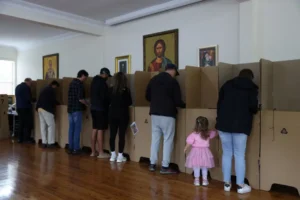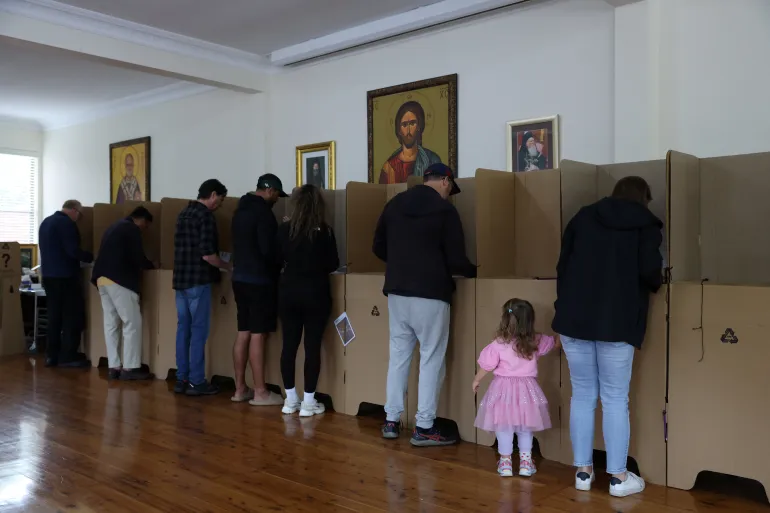
Australians will head to the polls on Saturday to vote in federal elections and choose their next parliament.
The ruling centre-left Labor Party, led by Prime Minister Anthony Albanese, is polling slightly higher than the Liberal-National Coalition, led by Peter Dutton, in a campaign that has been largely dominated by housing price woes.
What’s at stake?
Australians will vote for the upper and lower houses of parliament.
Voters will elect representatives for their area – members of parliament (MPs) – to the lower chamber, the House of Representatives, which initiates or proposes most laws.
There are currently 151 elected members of the House, who hold their seats for three years. However, this year, the House will shrink to 150 elected members due to a redrawing of electoral districts.
Voters will also elect representatives for their state or territory to the upper chamber of parliament, the Senate, which reviews the laws passed by the House. There are 76 elected senators who hold their seats for six years. This year, 40 of these seats are up for grabs.
Can people vote at other times?
Australia has more than 500 early voting centres, which opened on April 22 and will close on Friday, May 2. About 4.8 million Australians had already cast early ballots as of Thursday.
During the early voting period, overseas Australians may vote at overseas voting centres, which include embassies and consulates. While it is not compulsory for overseas Australians to vote, they must notify the AEC if they are not voting.
There is also a remote voting system in Australia that opened on April 22. Small AEC teams travel by car, plane, helicopter or boat to collect votes from remote communities. They have visited remote locations and islands, including the Cocos Islands and Christmas Island.
Australia also has a postal voting system.
How do Australian elections work?
A federal election takes place every three years in Australia through a preferential voting system.
Voting is compulsory in Australia for citizens aged 18 and older. There are 18 million eligible voters in Australia. Voters must be registered on an electoral roll to be able to cast their ballots.
If voters do not vote and fail to submit a legitimate reason, they face a 20-Australian-dollar (US$12.75) penalty.
After voters’ identities are verified at polling stations and checked off the electoral roll, they are given two ballot papers – one for each of the two houses of parliament. Voter ID is not required.
A green ballot paper is for selecting representatives for the House of Representatives. On this paper, voters must rank all the candidates running in their constituency in order of preference.

